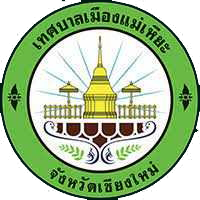Articles
บทความปั่น @เมืองแม่เหียะ เพื่อลดก๊าซเรือนกระจก

แม่เหียะ คือ เมืองยอดฮิตเรื่องการออกกำลังกายมาแต่ไหนแต่ไร เรื่องนี้คนเชียงใหม่กันทราบดีอยู่เป็นทุน จึงไม่แปลกใจที่ทุกเช้าเย็น จะมีขบวนรถยนต์และจักรยานยนต์จอดเรียงรายเป็นแถวทิว รอคอยเจ้าของและครอบครัวที่กำลังรวมตัวกันออกกำลังกาย และเดิมทางกลับในกี่นาที มองแง่หนึ่งภาพตรงหน้าบ่งบอกถึงการขาดแคลนพื้นที่สีเขียว พื้นที่นันทนาการที่มีคุณภาพของเมืองเชียงใหม่ อีกมุมหนึ่งคือ การสัญจรดังกล่าวนำพาการปลดปล่อยคาร์บอนเข้ามาสู่พื้นที่โดยหลีกเลี่ยงไม่ได้
ประเด็นเรื่อง ‘การจัดการคาร์บอน’ และกิจกรรมที่เกิดขึ้นในพื้นที่จึงเป็นเรื่องสำคัญหากต้องการรักษาภาวะความเป็นกลางทางคาร์บอน หรือพูดง่ายๆ คือการลดผลกระทบทางสิ่งแวดล้อม และสร้างปัจจัยเกื้อหนุนให้สิ่งแวดล้อมโดยรวมดีขึ้นไปพร้อมๆ กัน
การเดินทางโดยจักรยาน จึงเป็นหนึ่งในทางเลือกที่หลายคนพูดถึง เพราะตอบโจทย์ทั้งการไม่ใช้พลังงาน และการสัญจรไปให้ถึงจุดหมายในระยะใกล้ไปพร้อมๆ กัน
University of California, Los Angeles (UCLA) มหาวิทยาลัยที่ได้รับรางวัล Bicycle Friendly University ปี 2019-23 จาก The League American Bicyclist ทำการวิจัยและได้ผลลัพธ์ที่น่าสนใจว่าการใช้จักรยานเพื่อการสัญจรทดแทนการใช้รถยนตร์ขอคน 1 คน ช่วยลดการปลดปล่อยคาร์บอนของกิจกรรมประจำวันของคนคนนั้นได้ถึง 67% โดยระยะทางที่เหมาะสมกับทั้งร่างกายและการปลดปล่อยคาร์บอนอยู่ที่ราวๆ ครึ่งวัน หรือคิดเป็นระยะทางไม่เกิน 20 กม.
คณะวิจัยโครงการการพัฒนากลไกและต้นแบบธุรกิจที่เอื้อต่อการลงทุนเชิงพื้นที่ เพื่อมุ่งสู่การเป็นเมืองคาร์บอนต่ำที่น่าอยู่ เทศบาลเมืองแม่เหียะ ได้เล็งเห็นความสำคัญของการใช้จักรยานทั้งในด้านการสัญจร และการออกกำลังกาย จึงได้ทำการศึกษาเปรียบเทียบการเดินทางในพื้นที่เทศบาลเมืองแม่เหียะ 6 เส้นทาง โดยการใช้รถยนต์ และการใช้จักรยาน พบข้อมูลที่น่าสนใจ และเชื้อเชิญให้พวกเราหันมาใช้จักรยาน ดังนี้
“การดำเนินกิจกรรมจำนวน 6 เส้นทาง รวมระยะทางทั้งสิ้น 16.11 กิโลเมตร ประมาณการณ์ปริมาณยานพาหนะที่วิ่งในเส้นทางทั้งหมด จำนวน 4,408,470 คัน/ปี แยกเป็นรถยนต์ส่วนบุคคล จำนวน 1,146,202 คัน/ปี รถสองแถว จำนวน 793,525 คัน/ปี และรถจักรยานยนต์ จำนวน 2,468,743 คัน/ปี
ถ้ามีการดำเนินกิจกรรมโดยใช้เส้นทางดังกล่าวเป็นเส้นทางเดินและทางจักรยาน ปริมาณก๊าซเรือนกระจกที่คาดว่าจะลดได้ทั้งหมด จำนวน 852 tCO2/ปี คำนวณการปล่อยก๊าซเรือนกระจกโดยใช้วิธีการตาม Clean Development Mechanism (CDM) โดยตั้งสมมติฐานว่าใน 6 เส้นทาง ได้แก่ เส้นทางพื้นสวนโลก-บ้านอุโบสถ, เส้นทางบ้านท่าข้าม หมู่ 5, เชียงใหม่ 108, เชียงใหม่ 121, เส้นทางเทศบาลเมืองแม่เหียะ และเส้นทางอุทยานหลวงราชพฤกษ์ 2 เส้นทาง พบว่า
เส้นทางที่ 1. พื้นที่สวนโลก – บ้านอุโบสถ ระยะทาง 3.69 กม. หากมีการใช้จักรยานหรือใช้การเดินปริมาณก๊าซเรือนกระจกที่คาดว่าจะลดได้ 129 tCO2/ปี
เส้นทางที่ 2 บ้านท่าข้าม หมู่ 5 ระยะทาง 1.57 กม. ปริมาณก๊าซเรือนกระจกที่คาดว่าจะลดได้ 12 tCO2/ปี
เส้นทางที่ 3 เชียงใหม่ 108 ระยะทาง 2.14 กม. ปริมาณก๊าซเรือนกระจกที่คาดว่าจะลดได้ 261 tCO2/ปี
เส้นทางที่ 4 เชียงใหม่ 121 ระยะทาง 5.22 กม. ปริมาณก๊าซเรือนกระจกที่คาดว่าจะลดได้ 394 tCO2/ปี
เส้นทางที่ 5 เทศบาลเมืองแม่เหียะ ระยะทาง 1.35 กม. ปริมาณก๊าซเรือนกระจกที่คาดว่าจะลดได้ 13 tCO2/ปี
เส้นทางที่ 6.อุทยานหลวงราชพฤกษ์ 2 เส้นทาง รวมระยะทาง 2.14 กิโลเมตร ปริมาณก๊าซเรือนกระจกที่คาดว่าจะลดได้ 43 tCO2/ปี
แม้ในทางตัวเลขและหน่วยนับอาจจะเข้าใจเป็นภาพผลกระทบได้ยาก แต่หากลองเปรียบเทียบกับการใช้รถส่วนบุคคลในพื้นที่เทศบาลเมืองแม่เหียะโดยรวมแล้ว จะเห็นได้ว่าการใช้จักรยานเป็นทางเลือก ซึ่งน่าจะหนึ่งในวิธีการหลัก ควบคู่ไปกับการส่งเสริมการเดิน การใช้รถไฟฟ้า และการมีระบบขนส่งมวลชนระดับเมือง ซึ่งจะช่วยลดการปลดปล่อยคาร์บอนในพื้นที่เทศบาลเมืองแม่เหียะได้อย่างมีนัยยะสำคัญ

- How Riding A Bike Benefits the Environment [UCLA Transportation] (https://transportation.ucla.edu/blog/how-bike-riding-benefits-environment)
Cycling @ Mae Hia City to reduce greenhouse gases
Mae Hia has been a popular city for physical activities since time immemorial.
This image is well known to the people of Chiang Mai. Therefore, it is not surprising that each morning and evening there is a convoy of cars and motorcycles lined up in rows, waiting for their families and owners, who have come to exercise, to return in a few minutes. On one hand, this picture indicates a lack of green space and quality recreation areas in Chiang Mai. On the other, it illustrates that such traffic inevitably increases carbon emissions in the area.
The issue, therefore, of ‘carbon management’ of local activities becomes essential if we wish to remain carbon neutral or, in other words, reduce our environmental impact, whilst simultaneously nurturing the factors which contribute to improving the overall environment.
Travel by bicycle is one of the options that many people discuss, as it simultaneously meets the needs of both energy consumption and travel to nearby destinations.
The University of California, Los Angeles (UCLA), awarded the Bicycle Friendly University Award from 2019-2023 by The League American Bicyclist, conducted a study which produced interesting results, demonstrating how when a person’s commute by car is substituted for bicycle, carbon emissions produced by that person’s daily activities are reduced by up to 67%, with optimal distance for body and carbon emissions being around half a day, or up to 20km.
The Research Team for the Development of Mechanisms, Business Models and Projects that Facilitate Area-Based Investment, in striving to turn Mae Hia Municipality into a low-carbon city, have realized the effectiveness of using bicycles both in terms of traffic and exercise. Accordingly, a comparative study was conducted of travel by car along 6 routes in the Mae Hia municipal area, compared with travel by bicycle, which produced some interesting information, and invites us now to investigate bicycles further, as follows.
“Activities on 6 routes with a total distance of 16.11 kilometers; estimated total number of vehicles operating on the routes 4,408,470 vehicles/year, divided into 1,146,202 privately-owned cars/year, 793,525 minibuses/year, and 2,468,743 motorcycles/year”.
If provisions are made for activities on such routes, like walking and cycling paths, the total amount of greenhouse gases is estimated to be reduced by 852 tCO2/year. Greenhouse gas emissions (GHG) are calculated using the Clean Development Mechanism (CDM) method. Specifically, for Ban Tha Kham, Moo 5, Chiang Mai 108, Chiang Mai 121, Mae Hia Municipal Road, and Royal Park Rajapruek (two routes), it was found:
Route 1. Suan Lok area – Ban Ubosot. Total distance: 3.69km. If using bicycles or walking, GHG emissions are estimated to be reduced by 129 tCO2/year.
Route 2. Ban Tha Kham, Moo 5. Total distance: 1.57km. GHG emissions estimated reduction 12 tCO2/year.
Route 3. Chiang Mai 108. Total distance: 2.14km. GHG emissions estimated reduction 261 tCO2/year.
Route 4. Chiang Mai 121. Distance: 5.22km. GHG emissions estimated reduction 394 tCO2/year.
Route 5. Mae Hia Municipality. Distance: 1.35km. GHG emissions estimated reduction 13 tCO2/year.
Route 6. Royal Park Rajapruek (two routes): Distance 2.14km. GHG emissions estimated reduction 43 tCO2/year.
Even in terms of numbers and units, it may be difficult to visualize the effects. However, if comparing against the use of private cars in Mae Hia Municipality on the whole, it is evident that bicycles remain a viable option, and probably one of the main solutions together with promoting walking, use of electric trains, and city-level mass transit systems, for significantly reducing carbon emissions in the Area of Mae Hia Municipality.
- How Riding A Bike Benefits the Environment [UCLA Transportation] (https://transportation.ucla.edu/blog/how-bike-riding-benefits-environment)









